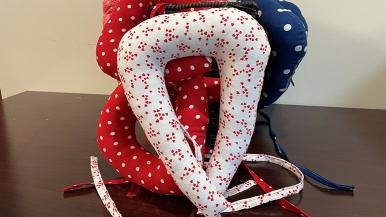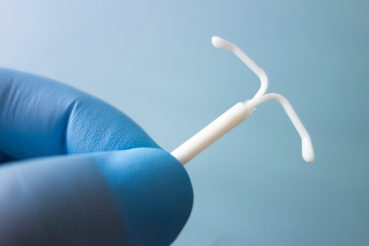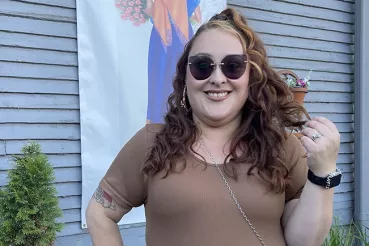Before they’re discharged, every patient who has had breast surgery at Rush Copley Medical Center is given a pillow. Not just any pillow, though: It’s a breast support pillow designed to help keep pressure off of incisions and to help keep the patient comfortable while riding in a car.
But they also serve a third purpose, according to Kelly Barger, RN, clinical manager of Rush Copley’s Day Surgery unit. They communicate to the patient that somebody cares about them — someone who doesn’t even know them.
The pillows are made for patients by the Giving Back Society, a group of cancer survivors who meet at Waterford Place Cancer Resource Center. Wanting to pay it forward by helping other cancer patients on their journeys, members meet monthly to participate in projects that make a difference to the cancer community.
Creating something useful
“It’s a wonderful way to give back,” says Lisa Lapinski, who leads the group, which has been active for more than five years. “This is a great way to do it — by creating something useful for someone.”
She says they make the small, u-shaped pillows by the dozens.
The pillow fits under the patient’s arm, propping it up to keep pressure off the chest. It can also be used as a buffer between the incision and the seat belt when driving home from the hospital. It prevents the seat belt from digging into the tender surgical site across the chest.
“Protecting your incisions and ensuring that you aren’t straining your surgical area is key to a speedy recovery, and these pillows help do just that,” Barger says.
Comfort and a caring message
While the pillows are a great comfort item for patients, Barger thinks it is important for the patients to know where the pillows come from. Many of the members of the Giving Back Society are breast cancer survivors who received similar pillows themselves or knew of their benefits. And each member has a role in making the pillows. One person cuts the fabric, another person sews, a third person stuffs and a fourth person completes it.
“The pillows are of such value to patients,” Lapinski says. After the surgical site has healed, the pillows can also be used as neck pillows and are great for traveling or sitting in bed.
But Barger believes the message the pillow sends is comforting in itself.
“Patients are often scared and vulnerable,” she says, “but they and their families are so touched when I tell them how the pillows were made. The pillow sends the message that somebody cares about you who doesn’t even know you. It says, ‘You’re not alone — we care about you.’”




